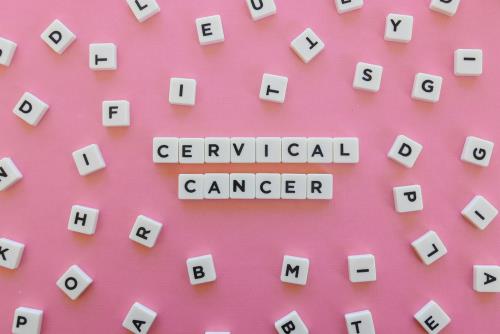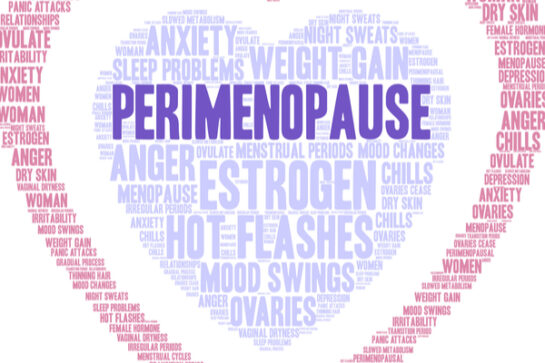Do you remember when you last had a Pap smear? Or HPV test? Do you know when your next ones are due? And do you even know the difference between these two cervical cancer screenings?
If you’re anything like me, you have your test, feel relieved you can check it off your to-do list, wait for your hopefully negative result, and don’t think about it again for months, or sometimes, years. Just knowing the test might be due can provoke a sense of dread (and embarrassment – those stirrups!). Plus, it can be momentarily painful.
I don’t remember having an HPV test at all apart from during my pregnancy 9 years ago, and I assume any other screenings before and since have been Pap smears. And didn’t we used to have them every year? Or was it every 2 years? I’ve been having cervical cancer screenings for almost three decades and it’s all a bit of a blur.
So it’s no surprise that when I interviewed Dr. Kathryn Macaulay about the importance of OB-GYN annual physicals, she spoke of the challenge doctors have educating women of the updated recommendations of how often they should be having Pap and HPV tests, and how and why they differ.
Annual physicals are the norm for many people, so it’s easy to assume your doctor will remind you when your cervical cancer screenings are due. But with Covid restrictions forcing many people to have phone or zoom annual physicals recently, as opposed to in-person visits (or just miss them altogether) chances are you may not be up to date. Case in point, the American Cancer Society (ACS) says there has been a substantial decline in cancer screenings due to the pandemic. Further research found a staggering 94% drop in cervical cancer screenings alone in 2020.
Preventative screenings are an essential part of a woman’s health, and following testing guidelines can help detection of pre-cancers, which can then be treated to prevent the onset of cervical cancer. Surprisingly, though, a recent study revealed that cervical cancer screening rates in the US are currently proportionately sub par in comparison to other first world countries, and an estimated 14% of women in the US aren’t screened at all.
So what’s going on? Let’s look at the facts:
How do you get cervical cancer?
Almost all cases of cervical cancer are caused by HPV infections, of which there are over 100 types. HPVs are categorized by the CDC as either cancer-causing (high risk) or wart-causing (low risk), and 13 types of HPV have been found to cause cervical cancer. Although many HPV infections clear up by themselves, they can also cause precancerous lesions. Early detection is essential and treatment for the lesions includes surgical removal or cryotherapy. The screenings also detect cervical cancers that are already developed early on so that they can be treated as well.
The difference between a Pap smear and an HPV test
Nearly all cervical cancers are caused by the human papillomavirus virus, commonly known as HPV, and for over 60 years, the Pap smear was the standard test for it. The test involves a small brush used to remove potential precancerous cells from the surface of the cervix and surrounding area, which are then studied under a microscope. The Pap test’s ability to identify precancerous cells led to a significant decline in cervical cancer cases and resulting deaths since its use and it is an important cancer prevention tool. It can also detect infections in the cervix.
The HPV test is pretty straight forward in that it tests specifically for the virus itself. It is performed in the same way as the Pap smear. There is also now a third test option called the HPV/Pap Cotest, which is considered to be more effective than just a Pap test.
Who should have what, and when? The current screening recommendations:
The American College of Obstetricians and Gynecologists (ACOG) says women aged 30-65 years old can have any of the 3 cervical cancer screening options listed above, so speak to your doctor to see which test they recommend or offer so you know what you’re getting. Recommendations are as follows:
- Primary HPV testing (stand-alone HPV test) – recommended every 5 years
- Pap testing (also known as cervical cytology) – recommended every 3 years, primarily for those aged between 21-29
- Co-testing, which is a combination HPV and Pap testing – recommended every 5 years
The ACOG says screening should begin at age 21 and can stop at age 65 if there has been ‘adequate negative testing’ achieved.
The American Cancer Society recommendations differ slightly in that while they list the same test options as above, although with the HPV test every 5 years as first choice, they say women should begin testing at age 25.
A few things to note:
- These guidelines do not apply to those already diagnosed with cervical cancer or pre-cancers
- Although this website is written for women in midlife, I’ve included all age testing recommendations for those with both older or younger families and loved ones
- The HPV recommendations apply even if you’ve been vaccinated against HPV
- High risk candidates who may require further testing include women with compromised immune systems, HIV or those who have had previous treatment for cervical cancer or lesions.
In the UK, all women between 25 and 64 are informed, or ‘invited’ for cervical cancer screenings by letter by the National Health Service (NHS).
Warning signs for cervical cancer in between routine screenings
This can be confusing for a woman during perimenopause due to one of the main symptoms of cervical cancer being irregular bleeding or unusual menstrual cycles. Speak to your doctor if you experience heavier than normal bleeding during perimenopause or vaginal bleeding after you’ve gone through menopause as both are possible signs of cervical cancer.
What is the HPV vaccine, and who can get it?
Most of you reading will not be eligible for the HPV vaccine yourselves due to age, but you may have children who are. For parents who want more info, I wrote this article.
The US was one of the first countries to implement in the HPV vaccine back in 2006 and it was lauded as a major breakthrough in the fight against cervical cancer. The vaccine was created to prevent infection by HPVs before a person has exposure to them, i.e. before they are sexually active. It is therefore recommended to be given to both boys and girls between 11-12 years old.
The vaccine can still be given to men and women up to the age of 26, if they didn’t get vaccinated before. From age 27-46 years old you can still benefit from vaccination but in general, men and women over 26 are not advised to get vaccinated due to the high likelihood of them already being exposed to HPV from sexual activity, which results in low protection rates.
Does the vaccine treat existing HPV infections?
No, it cannot treat or cure existing infections.
Do you still need to get tested for cervical cancer if you’ve had the HPV vaccine?
Yes. According to the National Cancer Institute, women who have had the HPV vaccine should still get routinely tested for cervical cancer as current vaccines do not provide protection against all HPV strains.
Hope for the future
In 2018, the World Health Organization (WHO) declared a goal of eradicating cervical cancer as a public health issue. They based their goal on the following figures: 90% of girls getting the HPV vaccine by age 15, 70% of women receiving the recommended screening, and 90% treatment of both precancer and cancer cases.
In 2020, a study by Harvard T.H. Chan School of Public Health used the same vaccination and screening goals as WHO to compare how the same aim can be achieved in the US. The study concluded that a combination of HPV vaccination, which helps to produce herd immunity, and regular test screenings will result in a significant decline in cervical cancer rates in the US.
Crucially, amping up screenings were found to be 90% the most effective way to reduce cervical cancer rates and the study stated that the US is predicted to eliminate cervical cancer by 2038-2046, or even ten years earlier if higher screening rates are achieved.
If there’s one thing I’ve learned as I’ve got older it’s to advocate for my health and garner as much expert info as I can. I fell short in keeping up with my cervical cancer screening monitoring but it’s never too late. So next time you’re facing your feet in stirrups, remember that early detection for all cancers is critical, and it will definitely be worth it.
*Please note, this article is for informational purposes only and all figures were current at time of publication. As with all medical issues, speak to your doctor to make an informed decision about you and your family’s health.




